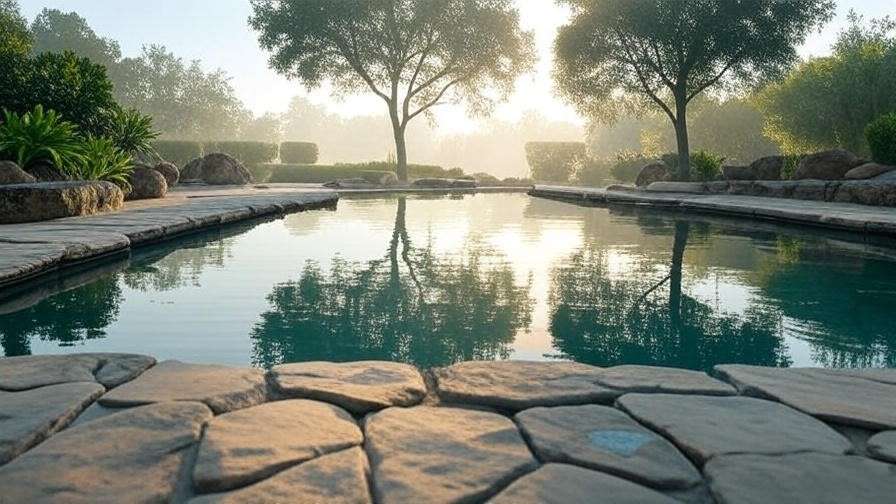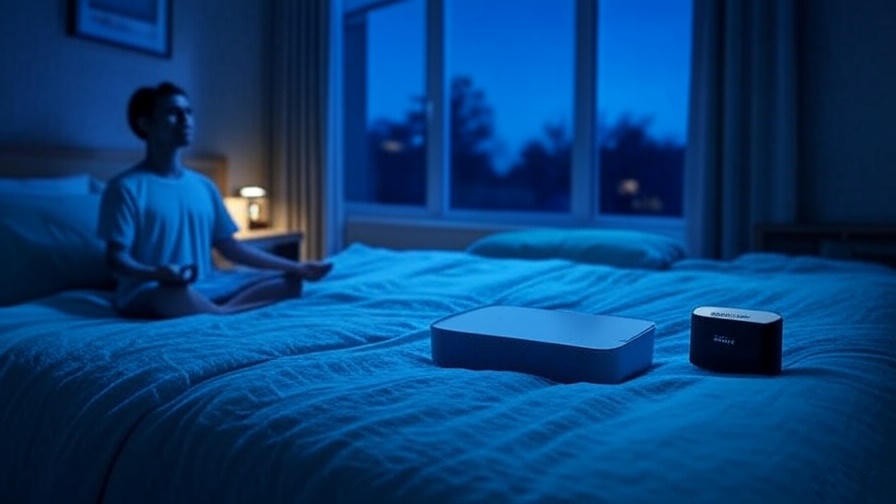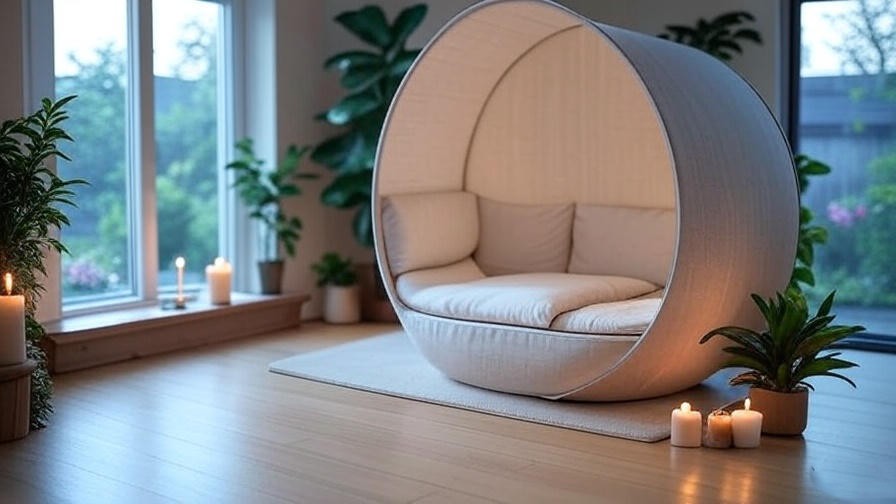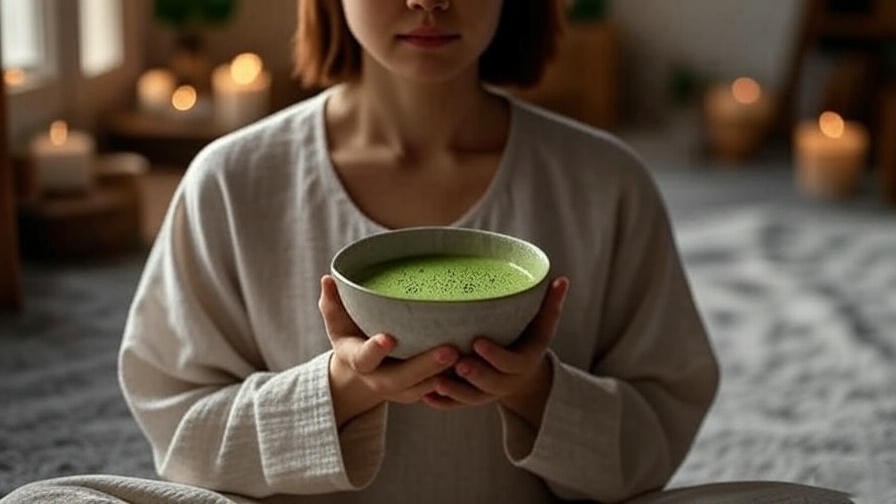Imagine this: You’re dragging yourself through another chaotic day, your mind buzzing with deadlines, notifications, and endless to-dos. The weight of stress feels like a storm cloud hovering over you. Now, picture stepping into a tranquil oasis where the gentle ripple of a meditation pool washes away your tension, guiding you into a state of calm clarity. In today’s fast-paced world, finding peace can feel like a luxury, but a meditation pool—a water feature designed to enhance mindfulness and relaxation—offers a practical, transformative solution. This article dives deep into how a meditation pool can elevate your daily wellness routine, backed by expert insights, scientific research, and actionable steps to create your own sanctuary of serenity.
Whether you’re a seasoned meditator or a beginner seeking stress relief, a meditation pool can be a game-changer for your mental, emotional, and physical well-being. Drawing from my years of studying holistic wellness and designing mindful spaces, I’ll guide you through the science, benefits, and practical steps to integrate this powerful tool into your life. Let’s explore how a meditation pool can help you reclaim calm and transform your daily routine.
What Is a Meditation Pool?

Defining the Concept
A meditation pool is a purposefully designed water feature that fosters mindfulness, relaxation, and a deeper connection to your environment. Unlike a standard fountain or pond, a meditation pool is crafted with intention—its sights, sounds, and ambiance are tailored to support meditative practices. Rooted in traditions like Zen gardens and modern spa-inspired designs, these pools have gained popularity as wellness tools in homes, offices, and wellness centers. They range from minimalist tabletop fountains to expansive backyard water features, all designed to create a soothing sensory experience.
The concept draws inspiration from ancient practices. For example, Zen monks in Japan used koi ponds and water gardens to cultivate mindfulness, while modern wellness experts incorporate water elements into spa therapies. Today, meditation pools are accessible to anyone seeking a serene space to unwind and reconnect.
Key Features of a Meditation Pool
What sets a meditation pool apart? It’s all about intentional design. Key features include:
- Gentle Water Flow: The soft trickle or ripple of water creates a calming auditory backdrop, perfect for meditation or relaxation.
- Minimalist Aesthetics: Clean lines, natural materials like stone or bamboo, and uncluttered designs promote focus and tranquility.
- Sensory Engagement: The visual of rippling water and the tactile feel of nearby elements (like smooth pebbles) enhance mindfulness.
- Customizable Elements: Options like lighting, plants, or seating allow personalization to suit individual preferences.
As Dr. Ellen Langer, a renowned mindfulness expert, notes, “Water’s rhythmic presence can anchor us in the moment, making it easier to let go of distractions.” A meditation pool’s design leverages these elements to create an environment conducive to deep relaxation and mental clarity.
The Science Behind Meditation Pools and Wellness
How Water Enhances Mindfulness
Science backs what ancient traditions have long known: water has a profound calming effect on the mind. Research on “blue spaces” (bodies of water like rivers, lakes, or fountains) shows that exposure to water reduces stress and improves focus. A 2019 study published in Scientific Reports found that just 20 minutes near water lowered cortisol levels and boosted feelings of calm. The gentle sound of flowing water mimics natural rhythms, activating the parasympathetic nervous system, which promotes relaxation.
Water also engages multiple senses, making it a powerful tool for mindfulness. The visual of rippling water can serve as a focal point during meditation, while its sound drowns out distractions, helping you stay present. These sensory inputs create what neuroscientists call a “restorative environment,” ideal for mental rejuvenation.
Benefits for Sleep, Stress, and Mental Clarity
Meditation pools offer a range of benefits that align with holistic well-being:
- Improved Sleep Quality: The soothing sounds of water can ease you into a relaxed state, preparing your body for restful sleep. A 2021 study in Sleep Medicine linked white noise, like water sounds, to faster sleep onset and deeper rest.
- Stress Reduction: Regular exposure to a meditation pool can lower anxiety and stress, as water’s calming effects reduce heart rate and blood pressure.
- Enhanced Mental Clarity: By creating a distraction-free space, meditation pools help sharpen focus and boost cognitive function, especially for those with demanding schedules.
- Emotional Balance: The serene ambiance fosters positive emotions, helping combat feelings of overwhelm or burnout.
Dr. John Ratey, author of Spark, emphasizes that environments designed for calm, like those with water features, can “rewire the brain for resilience and focus.” A meditation pool taps into these benefits, making it a versatile tool for wellness.
Why a Meditation Pool Is a Game-Changer for Your Wellness Routine
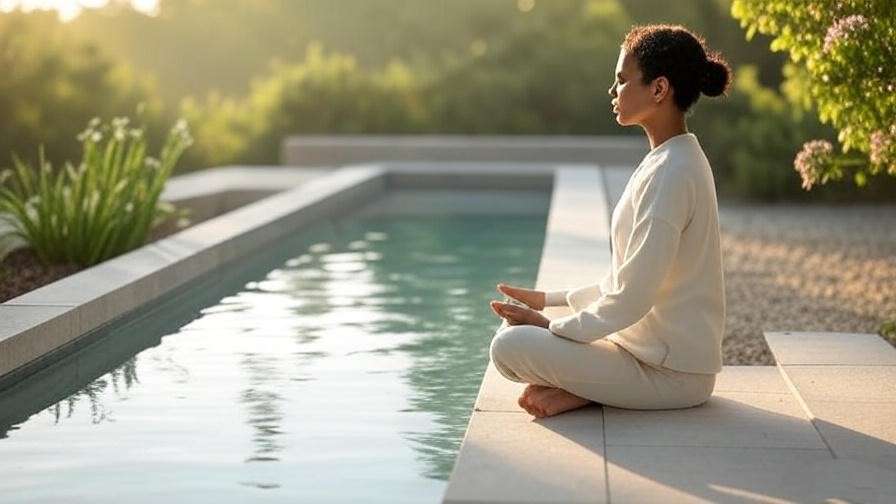
Enhancing Meditation Practice
A meditation pool creates an ideal environment for deepening your meditation practice. Its gentle sounds act as a natural white noise, blocking out external distractions like traffic or household noise. This makes it easier to focus on your breath, a mantra, or a visualization exercise. For example, you might try a sound meditation, focusing on the rhythm of the water, or a visualization practice, imagining your stress dissolving into the pool’s ripples.
For beginners, a meditation pool can make mindfulness more accessible. The sensory cues of water help anchor attention, reducing the intimidation factor of sitting in silence. Seasoned meditators, meanwhile, can use the pool to explore advanced techniques, like open-awareness meditation, where the water’s flow becomes part of the practice.
Promoting Holistic Well-Being
Beyond meditation, a meditation pool supports holistic wellness by addressing physical, emotional, and spiritual needs:
- Physical Relaxation: The calming environment reduces muscle tension and promotes a relaxed posture, ideal for yoga or stretching.
- Emotional Balance: The serene setting fosters feelings of peace and gratitude, countering stress or negativity.
- Spiritual Connection: For those with spiritual practices, a meditation pool can serve as a sacred space for reflection or prayer.
These benefits are especially valuable for specific audiences. Busy professionals can use a meditation pool to decompress after work, parents can find moments of calm amidst family chaos, and individuals with anxiety can leverage its soothing effects for emotional regulation.
Versatility for Any Lifestyle
One of the greatest strengths of a meditation pool is its adaptability. Whether you live in a sprawling suburban home or a compact city apartment, there’s a meditation pool for you. A small tabletop fountain can transform a desk into a mindfulness corner, while a backyard water garden can become a full-fledged wellness retreat. For example, Sarah, a 34-year-old graphic designer, added a portable water feature to her balcony and now uses it daily for 10-minute mindfulness breaks, reporting improved focus and less burnout.
How to Incorporate a Meditation Pool into Your Daily Routine
Setting Up Your Meditation Pool
Creating a meditation pool doesn’t have to be complex or expensive. Here’s how to get started:
- Choose the Right Size: For small spaces, opt for a tabletop fountain or a small container pond. Larger yards can accommodate stone pools or cascading waterfalls.
- Select Materials: Use natural elements like stone, wood, or ceramic to enhance the calming aesthetic. Avoid overly ornate designs that distract from mindfulness.
- Pick a Location: Place your pool in a quiet, low-traffic area, ideally with natural light or soft ambient lighting.
- Consider Sound: Ensure the water flow is gentle and rhythmic, not overpowering. Test the sound before committing.
- Add Complementary Elements: Include plants, pebbles, or a comfortable seat to create a cohesive meditation space.
Budget-Friendly Tip: A DIY meditation pool can be made with a ceramic bowl, a small pump, and decorative stones for under $50. For larger projects, consult a landscape designer to ensure durability and aesthetic alignment.
Daily Practices to Maximize Benefits
To make your meditation pool a cornerstone of your wellness routine, try these practices:
- Morning Mindfulness (10 Minutes): Start your day with a guided meditation beside the pool, focusing on the water’s sound to set a calm tone.
- Evening Wind-Down (15 Minutes): Use the pool’s ambiance to relax before bed. Try a body scan meditation, letting the water’s rhythm guide you.
- Mindfulness Exercises: Practice focusing on the water’s ripples or imagining your thoughts as leaves floating on the surface.
Meditation coach Lisa Harper recommends scheduling short sessions to build consistency: “Even five minutes daily by a meditation pool can rewire your stress response over time.”
Checklist for a Meditation-Friendly Environment
- Comfortable seating (e.g., cushion, bench, or yoga mat)
- Soft lighting (e.g., candles, string lights, or solar lanterns)
- Minimal distractions (e.g., turn off phones, choose a quiet spot)
- Natural elements (e.g., plants, stones, or driftwood)
Designing Your Ideal Meditation Pool
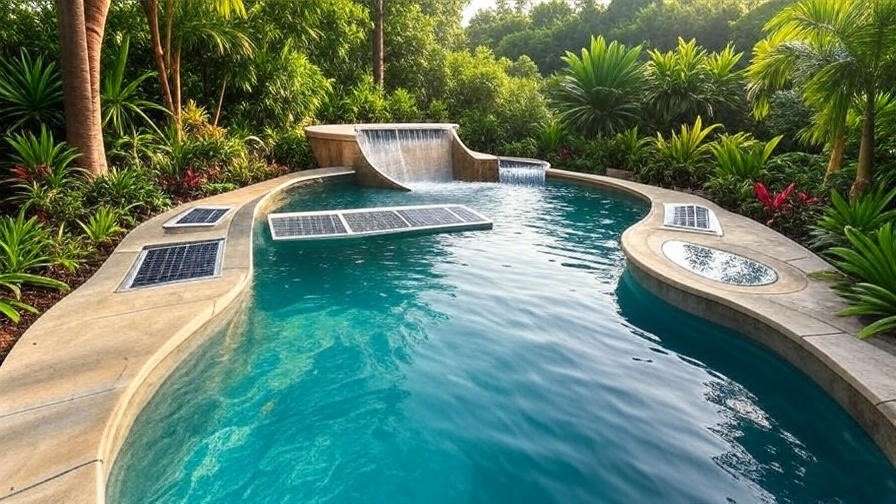
Key Design Considerations
A well-designed meditation pool balances aesthetics and functionality. Consider:
- Aesthetics: Opt for clean lines and natural materials to evoke calm. Zen-inspired designs with smooth stones and bamboo are popular, as are modern minimalist pools with sleek surfaces.
- Functionality: Ensure the pool is easy to maintain and has a reliable water pump. Solar-powered options are eco-friendly and cost-effective.
- Ambiance: Use soft lighting or surrounding greenery to enhance the mood. For example, floating lotus flowers or submerged LED lights can add a magical touch.
Eco-conscious readers might explore rainwater-fed pools or pumps powered by renewable energy, reducing environmental impact while maintaining serenity.
DIY vs. Professional Installation
For a budget-friendly option, a DIY meditation pool is achievable:
- Materials: Purchase a waterproof container (e.g., a ceramic pot), a submersible pump, and decorative elements like pebbles or aquatic plants.
- Assembly: Fill the container with water, install the pump, and arrange decorations. Test the water flow for a gentle sound.
- Placement: Position in a quiet corner of your home or garden, ensuring easy access for maintenance.
For larger or custom designs, hire a professional landscape designer. They can integrate features like cascading waterfalls or koi ponds, tailored to your space and vision. Expect costs to range from $500 for small installations to $5,000+ for elaborate setups.
Personalizing Your Space
Make your meditation pool uniquely yours with these additions:
- Crystals: Place amethyst or rose quartz near the pool for spiritual energy.
- Plants: Add ferns, moss, or water lilies to enhance the natural feel.
- Seating: Include a meditation cushion or bench for comfort during long sessions.
Comparison Table: Meditation Pool Styles
| Style | Features | Best For | Cost Range |
|---|---|---|---|
| Zen | Stone, bamboo, minimalistic | Small spaces, traditionalists | $50–$500 |
| Modern | Sleek lines, LED lighting | Urban homes, tech enthusiasts | $200–$2,000 |
| Tropical | Water lilies, vibrant plants | Large yards, nature lovers | $500–$5,000 |
Common Challenges and How to Overcome Them
Space and Budget Constraints
Limited space or funds shouldn’t stop you. For small apartments, a tabletop fountain ($20–$100) can serve as a meditation pool. Repurpose materials like a ceramic bowl or glass vase for a DIY option. If outdoor space is available, consider a small container pond with recycled materials to keep costs low.
Maintenance and Upkeep
Meditation pools require minimal upkeep with the right setup:
- Prevent Algae: Use a UV clarifier or add a few drops of eco-friendly algaecide monthly.
- Clean the Pump: Rinse the pump every 2–3 months to ensure smooth operation.
- Water Quality: Refill with filtered water to avoid buildup of minerals or debris.
A small tabletop pool might need just 10 minutes of maintenance monthly, while larger pools may require professional servicing annually.
Staying Consistent with Meditation
Building a meditation habit can be challenging, but a meditation pool makes it easier. Try:
- Habit Stacking: Pair your meditation pool time with an existing routine, like morning coffee.
- Set Reminders: Use a phone app or calendar to schedule daily sessions.
- Start Small: Begin with 5-minute sessions and gradually increase duration.
Wellness expert Dr. Sarah Thompson advises, “A meditation pool’s sensory cues can make consistency feel effortless—let the water guide you into the habit.”
Real-Life Success Stories
Case Study 1: Stress Relief for a Busy Professional
Mark, a 42-year-old tech executive, struggled with chronic stress and poor focus. He installed a small meditation pool in his home office, using a tabletop fountain with smooth river rocks. By meditating for 10 minutes daily beside the pool, Mark reduced his anxiety and improved his productivity. “The sound of the water became my reset button,” he says. Within three months, he reported better sleep and fewer tension headaches.
Case Study 2: Enhancing Family Wellness
The Patel family, living in a suburban home, added a backyard meditation pool with a cascading waterfall. They used it as a gathering spot for family mindfulness sessions, helping their two teenagers manage school stress. The pool became a focal point for bonding, with the family practicing gratitude meditations together. “It’s our sanctuary,” says Priya, the mother. “It’s brought us closer and calmer.”
Complementary Practices to Amplify Your Meditation Pool Experience
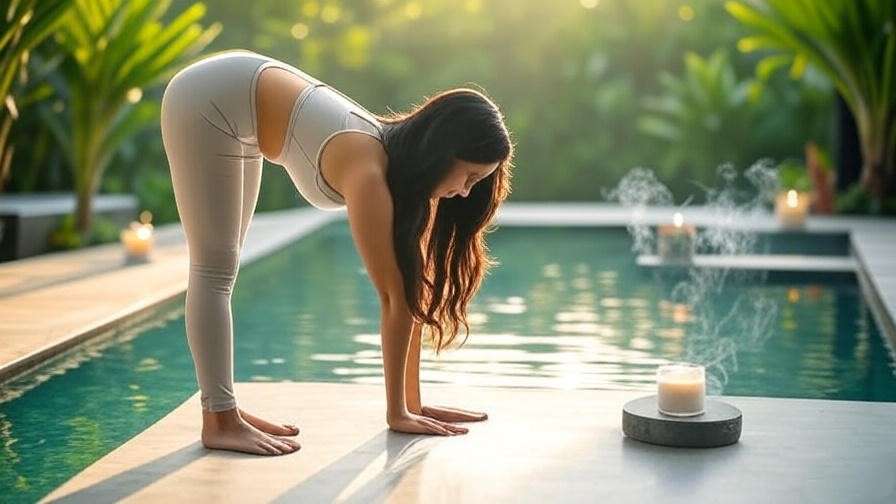
Pairing with Other Wellness Practices
Maximize your meditation pool’s impact by combining it with:
- Yoga: Practice gentle poses like child’s pose or savasana near the pool to enhance relaxation.
- Journaling: Reflect on your emotions or gratitude while listening to the water’s flow.
- Aromatherapy: Use essential oils like lavender or eucalyptus to engage another sense.
For example, try a 20-minute routine: 5 minutes of yoga, 10 minutes of meditation by the pool, and 5 minutes of journaling.
Technology and Meditation Pools
Modern technology can enhance your experience:
- Meditation Apps: Apps like Calm or Headspace offer water-themed guided meditations that pair perfectly with a meditation pool.
- Smart Features: Consider app-controlled fountains that adjust water flow or lighting for different moods.
Wellness coach Maya Chen suggests, “Technology can amplify your meditation pool’s benefits, but keep it simple to stay mindful.”
FAQs About Meditation Pools
What makes a meditation pool different from a regular water feature?
A meditation pool is designed with mindfulness in mind, featuring calming sounds, minimalist aesthetics, and sensory elements to enhance meditation, unlike decorative fountains focused on visual appeal.
Can I create a meditation pool in a small apartment?
Yes! Tabletop fountains or small container ponds are perfect for apartments. They’re affordable, portable, and require minimal space.
How much maintenance does a meditation pool require?
Small pools need 10–15 minutes of monthly maintenance (e.g., cleaning the pump, refilling water). Larger pools may require seasonal professional upkeep.
Are meditation pools suitable for beginners in meditation?
Absolutely. The sensory cues of water make meditation more accessible, helping beginners stay focused and relaxed.
How can I make my meditation pool eco-friendly?
Use solar-powered pumps, rainwater collection, or recycled materials to reduce environmental impact.
Conclusion
A meditation pool is more than a water feature—it’s a gateway to mental clarity, emotional balance, and holistic well-being. By creating a serene environment, it helps you combat stress, improve sleep, and deepen your mindfulness practice. Whether you start with a simple tabletop fountain or invest in a custom backyard pool, the benefits are profound and accessible. Take the first step today: explore designs, try a mindfulness exercise by a water feature, or consult a professional to create your personal sanctuary. With a meditation pool, you’re not just designing a space—you’re crafting a calmer, more centered life.

